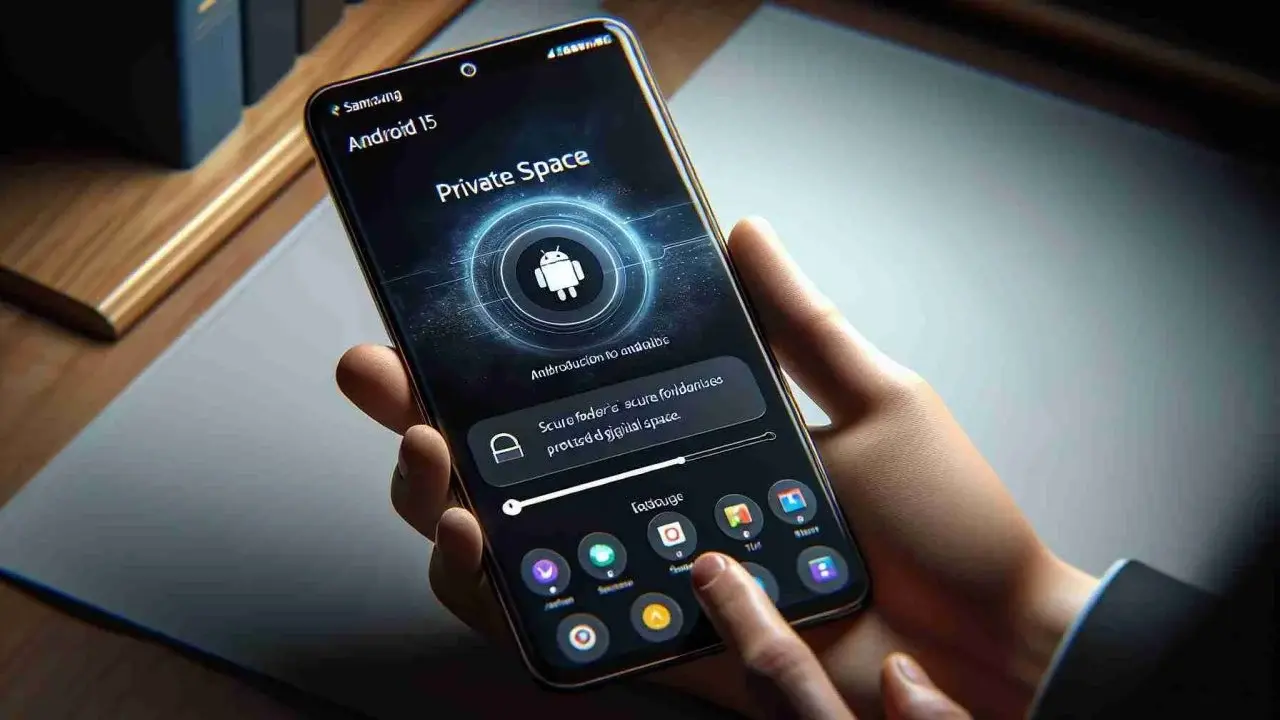The world of mobile technology is abuzz with anticipation for the upcoming Android 15 update from Google. While the official unveiling remains months away, beta versions are already offering tantalizing glimpses into the new functionalities on the horizon. Among the most intriguing revelations is a potential privacy-focused feature designed to safeguard against accidental information leaks during screen sharing.
Android 15 Poised to Enhance User Privacy with Screen Sharing Protections

This article delves deeper into this exciting development, exploring its technical underpinnings, potential benefits, and the current stage of implementation within the Android 15 beta.
Unveiling the “Sensitive Content Protection” Feature
Eagle-eyed developers scouring the latest Android 15 beta (version 1.1) have unearthed a hidden gem within the developer options menu. A setting dubbed “disable screen share protections” has sparked significant interest, hinting at a novel system known as “sensitive content protection.” While the full functionality remains under wraps due to its current disabled state, early indications suggest a paradigm shift in how Android handles screen sharing.
The core concept revolves around empowering installed applications to actively mask or redact sensitive areas of the screen during screen sharing or recording sessions. This could encompass a wide range of information, including:
- Password fields: The inadvertent exposure of login credentials poses a significant security risk. This feature could blur or obfuscate password fields as they are typed, preventing prying eyes from capturing this critical data.
- Banking information: Sensitive financial details displayed within banking apps could be automatically hidden, safeguarding users from unintentional breaches of financial privacy.
- Notifications: Sensitive notifications containing private messages, account details, or confidential information could be temporarily suppressed during screen sharing to prevent unintended disclosure.
This represents a significant departure from the current Android approach to screen sharing. Currently, the system merely informs users that the sharing application will have access to all on-screen content. While a step towards transparency, it ultimately leaves the onus of safeguarding sensitive information on the user. The proposed “sensitive content protection” feature aims to automate this process, offering a more robust layer of security.
Benefits and Considerations
The potential benefits of this feature are undeniable. Accidental information leaks during screen sharing are a prevalent concern. Particularly for users who frequently share screens for technical support, presentations, or demonstrations. By automatically redacting sensitive data, Android 15 would significantly enhance user privacy and peace of mind.
However, a few key considerations warrant further exploration:
- Granularity of Control: Will users have the ability to customize the types of content flagged as sensitive? Granular control over the redaction process would empower users to tailor the feature to their specific needs.
- App Compatibility: Ensuring seamless integration with existing applications is crucial. Compatibility updates for certain apps might be necessary to leverage the “sensitive content protection” functionalities effectively.
- Potential for Abuse: While the feature’s intentions are noble, malicious applications could potentially exploit its redaction capabilities to mask their true actions during screen sharing. Robust security measures must be in place to mitigate such abuse.
The Road Ahead: Beta Testing and Refinement
As with any new feature in development, the “sensitive content protection” system is likely to undergo further refinement through subsequent Android 15 beta releases. Close monitoring of future beta versions will provide valuable insights into the evolution of this functionality and its eventual implementation in the final Android 15 release.
Overall, the inclusion of “sensitive content protection” within the Android 15 beta marks a promising step towards a more privacy-conscious mobile experience. The ability to automatically safeguard sensitive information during screen sharing addresses a significant user concern and empowers users to share their screens with greater confidence. As the feature progresses through development, addressing the considerations outlined above will ensure its effectiveness and user-friendliness.
Beyond the immediate scope of this feature, its development reflects a broader trend within the mobile technology landscape. As user privacy becomes an increasingly prominent concern, we can expect further advancements in operating systems and applications that prioritize user control over personal information and safeguard against inadvertent data leaks.
Deep Dive: Technical Implementation and Potential Future Directions

While the specifics of the “sensitive content protection” feature remain shrouded in some mystery, delving into potential technical approaches can offer valuable insights. Here, we explore two broad implementation methods:
1. Application-Level Integration:
- This approach leverages APIs (Application Programming Interfaces) provided by the Android 15 framework. These APIs would enable applications to identify and redact sensitive content within their own user interfaces.
- Advantages:
- Granular control: Applications could tailor the redaction process to their specific data types and user interfaces.
- Existing codebase integration: Leveraging existing app code for content identification could streamline implementation.
- Disadvantages:
- App developer burden: Integrating the API into existing applications would require additional development effort.
- Inconsistent implementation: The effectiveness of the feature would depend on individual app developers prioritizing its integration.
2. System-Level Redaction:
- This approach utilizes the Android 15 framework to identify and redact sensitive content across all applications.
- Advantages:
- Uniform protection: All applications and screen content would be subject to the same redaction rules.
- Reduced development burden: App developers wouldn’t need to modify their applications to leverage the feature.
- Disadvantages:
- Potential for false positives: System-wide redaction rules might inadvertently obscure non-sensitive information.
- Limited customization: Users might have less control over the types of content flagged as sensitive.
The ultimate implementation approach chosen by Google will likely involve a balance between these two methods. APIs could be offered to empower application-level control while a core system-level redaction engine handles common sensitive data types.
Furthermore, the “sensitive content protection” feature has the potential to pave the way for even more sophisticated privacy controls in future Android iterations. Here are some possibilities:
- Context-Aware Redaction: The system could dynamically identify sensitive information based on the context of the screen being shared. For example, during a video call, only the user’s phone number might be redacted from a contact card. While all information would be displayed when sharing the contact details in another context.
- User-Defined Redaction Zones: Users could be empowered to designate specific areas of the screen for temporary redaction during screen sharing sessions. This would offer a high degree of granular control over what information appears.
- Integration with Secure Enclaves: Sensitive data redacted during screen sharing could be temporarily stored within a secure enclave on the device, further enhancing its protection.
These advancements would solidify Android’s position as a leader in mobile user privacy and empower users to confidently share their screens without compromising their sensitive information.
Conclusion: A Privacy-Centric Future for Screen Sharing
The “sensitive content protection” feature in the Android 15 beta represents a significant step forward for user privacy in the realm of screen sharing. While currently under development, this innovative functionality holds immense promise for safeguarding sensitive information and fostering a more secure mobile environment. As the feature evolves through subsequent beta releases and potentially into future Android iterations, its impact on user confidence and the overall security landscape of mobile technology will be worth observing. With a continued focus on user control and context-aware functionality, Android is poised to usher in a new era of secure and private screen sharing experiences.





